
HOW TO PLAN YOUR KITCHEN LIGHTING
Aug 27,2020
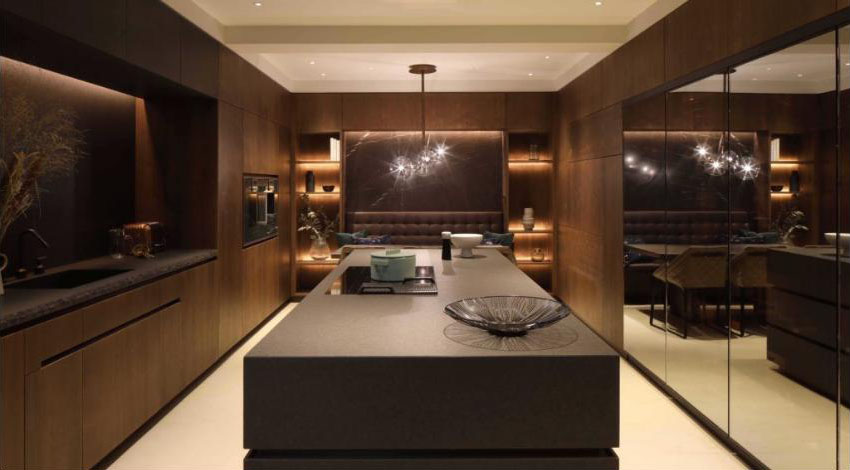
Your kitchen is the hub of the house. It’s a gathering place, where, from the first coffee of the morning to the last snack of the evening, everyone passes through. It’s for eating, for cooking, for sorting things out at the kitchen table, for chatting, for coffee with a friend, for reading the paper – it’s a room with multiple functions. Getting the planning of all areas of your kitchen right matters.
Lighting can make or break a kitchen. Once you’ve got an idea of how the cabinets, appliances, sink and furniture will be laid out, it’s time to contact a lighting designer. Functional lighting is crucial to make sure the areas where you cook, work and eat are well lit. But decorative lighting, architectural lighting, accent lighting, and having a simple operating system are equally important. The look, feel, and ease of use of your kitchen are all affected by the lighting.
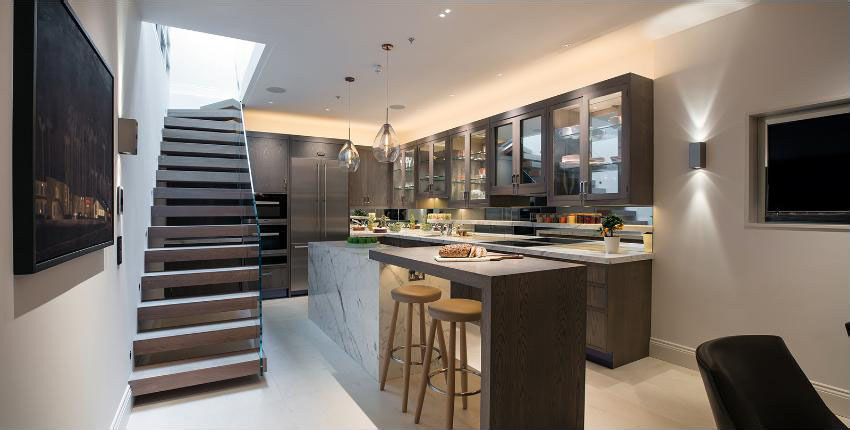
How do I design a kitchen lighting plan?
When planning kitchen lighting, first, we make sure there’s enough task lighting. A good bright focussed light for prepping food and cooking is essential. Then, we think about creating mood lighting for entertaining or dining – it’s often a mix of downlighting and decorative lighting. Increasingly, we also add low-level lighting, to provide interest at all levels. Using different lighting levels highlights different aspects of the space. Accent lighting in shelving or of artwork, for example, adds another layer of interest.
For decorative lighting, a client may have gathered ideas from magazines. We can also help decide if something will be too dominant in your kitchen, or if a design would look better in a series of three matching pendants. But also, we know which decorative lighting will provide the right light for the space. A lot of clients like to visit our showroom to help pick out ideas. We can also show how different lights look on different surfaces – it’s all about experiencing it.
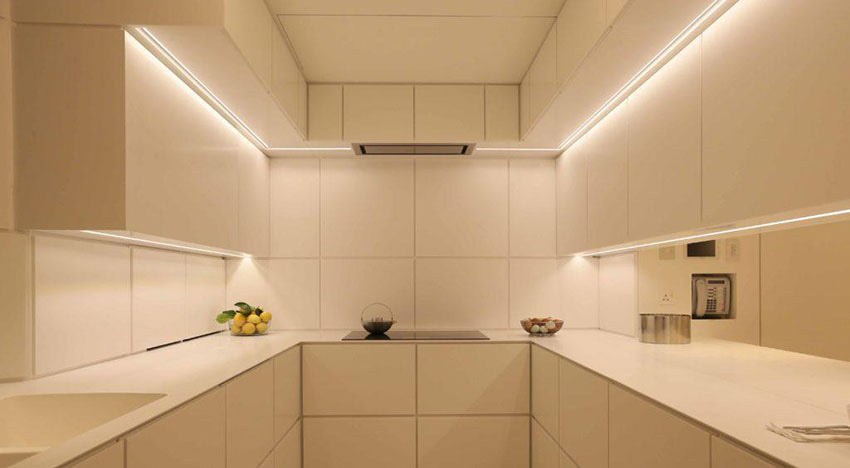
How to select the best LED kitchen lighting?
LED lighting with a lower number on the kelvin scale – between 2000-3000, offers more warmth, where at the other end of the scale, between 4000-7000 you’re getting very white bright lighting – better for tasks. It’s our job to select a range of moods which can be mixed and matched to create different atmospheres at different times of day and for different purposes. People find it harder to understand the kelvin ranges than they did with the old halogen bulbs.
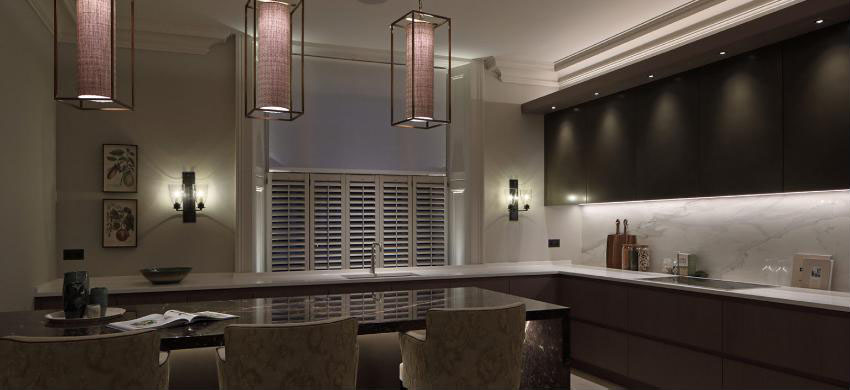
What planning is involved with kitchen lighting?
After we meet a client and discuss their ideas, we go away and work out a fee proposal so that they know an estimated cost and outline of the project. Once we’ve understood timings and scope on a project – whether it’s a newbuild home, a renovation, or simply a kitchen extension, we design lighting plans and provide an issue date, which is usually a couple of weeks after the meeting. After that, we meet again and run through the plans and scheme in more detail – showing circuits and products, and why we’ve paired different lights. We can then tweak things and alter the design if necessary. Finally, we work out when the lighting will be fitted with the electrician and construction team.
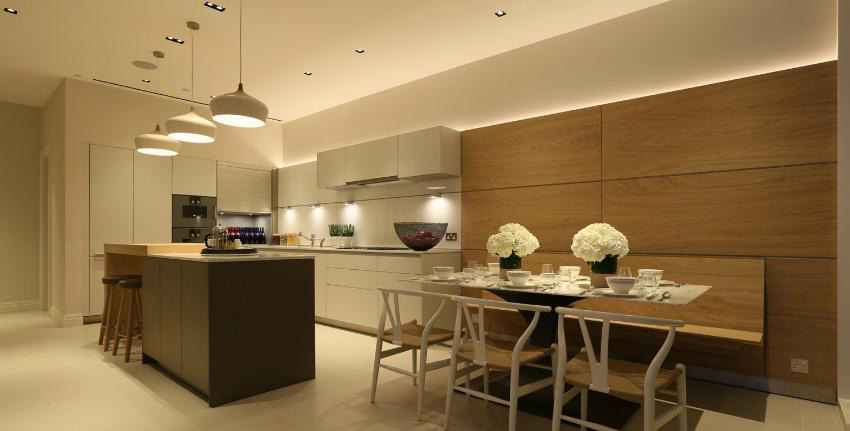
Do I need a kitchen layout before I start my lighting plan?
Knowing how you’re going to lay out your kitchen before you set the lighting design is important. Is there a chair that you might sit in beside a window for a morning coffee that would need a spotlight in winter evenings, for example? How large is your kitchen table going to be, with how many chairs, and what shape? Decorative pendants can be lovely above a table, but you’ll need to add downlights to highlight the rest of the table, too. And which area will you chop vegetables in, and where will the sink be? Will there be a TV in the kitchen? Also, think about where artworks or cookbooks will go – the more we know about room layout before we design, the better.
How do I control kitchen lighting?
This is an interesting aspect of current lighting. No-one wants their lighting operating system to be so complicated that it causes a headache. We have seen some horrors, where there are so many light switches that everything has to be labelled, which obviously doesn’t look great.
We recommend a dual approach. A simple remote control can be brilliant, offering set scenes, such as ‘evening’ or ‘dinner’ or ‘bright’ so that one switch operates groups of lights together to create a mood. An operating plate in the wall can do something similar, with options to set your own ambience. And a matching app on your phone is useful, too.
How do you light a small kitchen?
If you have a smaller galley kitchen, for example, a lighting designer can be even more relevant. Enhancing a smaller space is a skill. Layering the lighting plan helps draw your eye around the room, highlighting what might otherwise be dark corners. Uplighting at different levels can make a space feel bigger, too.
How do you light a large kitchen?
Equally, large kitchens need careful lighting plan consideration. You don’t want large empty spaces with small dots of light on the floor. Large spaces need to be handled in sections – open spaces need ambient lighting, and a large kitchen island needs light for tasks plus a setting for evening ambience, too. A lighting designer has skills up their sleeve to make sure a large kitchen doesn’t feel cavernous, and a small kitchen doesn’t feel poky.
Whatever your style, size and shape of kitchen, a lighting designer will add a much-needed depth to a new kitchen.
This article comes from JOHNCULLENLIGHTING company
- Latest news
34 genius hacks for LED strip lights
Apr 02,2021LED Strip Lights: How Are They Made?
Nov 30,2020LIVING ROOM LIGHTING IDEAS
Oct 30,2020LED LIGHTING VS. FLUORESCENT LIGHTING – THE FACTS
Sep 29,2020HOW TO PLAN YOUR KITCHEN LIGHTING
Aug 27,2020LIGHTING DESIGN: 5 TIPS FOR INTERIOR DESIGNERS
Jul 31,2020HOW TO USE INTEGRATED LINEAR LIGHTING
Jun 02,2020